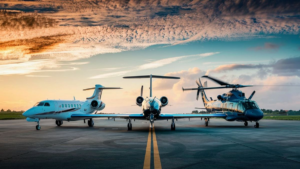The United States Army boasts a formidable fleet of fixed-wing aircraft, playing a crucial role in enhancing its capabilities for a variety of missions. These aircraft serve a vital role in providing air support, reconnaissance, surveillance, and transport, contributing to the overall effectiveness of the U.S. Army’s operations.
The Diverse Fleet
Within the U.S. Army’s inventory, there exists a diverse array of fixed-wing aircraft tailored to meet specific mission requirements. These aircraft range from versatile utility planes to sophisticated intelligence, surveillance, and reconnaissance (ISR) platforms.
Utility and Transport Aircraft
At the core of the U.S. Army’s fixed-wing fleet are utility and transport aircraft. These planes, such as the C-12 Huron and the C-23 Sherpa, are essential for troop transport, cargo delivery, and medical evacuation missions. Their versatility allows the Army to rapidly deploy personnel and supplies to various locations, ensuring swift and effective response capabilities.
Intelligence, Surveillance, and Reconnaissance (ISR) Platforms
The U.S. Army utilizes cutting-edge ISR fixed-wing aircraft to gather critical information and intelligence. Planes like the RC-12 Guardrail and the EO-5C enhance situational awareness, supporting ground forces by providing real-time data and reconnaissance capabilities. This technological edge is instrumental in decision-making processes and mission planning.
Operational Significance
The operational significance of fixed-wing aircraft in the U.S. Army cannot be overstated. These aircraft contribute to a wide range of missions, including strategic airlift, tactical reconnaissance, and battlefield mobility. The ability to rapidly deploy forces and equipment greatly enhances the Army’s agility and responsiveness, crucial elements in modern warfare.
Strategic Airlift Capabilities
Fixed-wing aircraft play a pivotal role in strategic airlift, enabling the rapid movement of troops and supplies over long distances. This capability ensures that the U.S. Army maintains a global reach, ready to respond to emerging threats and crises on a moment’s notice. Aircraft like the C-130 Hercules and the C-17 Globemaster III exemplify the Army’s commitment to strategic mobility.
Tactical Reconnaissance and Close Air Support
Fixed-wing aircraft provide the U.S. Army with essential capabilities for tactical reconnaissance and close air support. The A-10 Thunderbolt II, renowned for its firepower and durability, exemplifies the Army’s dedication to providing ground forces with effective air cover. These aircraft contribute to the protection and success of ground operations in diverse environments.
Technological Advancements
As technology continues to advance, the U.S. Army remains at the forefront of innovation in fixed-wing aviation. Modernization efforts focus on enhancing aircraft capabilities, incorporating state-of-the-art avionics, and improving fuel efficiency. These advancements ensure that the Army’s fixed-wing fleet remains a formidable force on the battlefield.
Unmanned Aerial Systems (UAS)
The integration of Unmanned Aerial Systems (UAS) further extends the U.S. Army’s capabilities in the realm of fixed-wing aviation. Drones like the RQ-7 Shadow and the Gray Eagle provide additional reconnaissance and surveillance options, reducing risk to human personnel while expanding the Army’s ability to gather crucial intelligence.
In conclusion, the U.S. Army’s fixed-wing aircraft form a critical component of its overall military capability. From utility and transport planes to sophisticated ISR platforms, these aircraft contribute to the Army’s success in a wide range of missions. As technology continues to evolve, the Army remains committed to maintaining a modern and versatile fixed-wing fleet, ensuring its readiness for the challenges of the future.
Frequently Asked Questions
Here are some frequently asked questions about the U.S. Army’s fixed-wing aircraft:
| Question | Answer |
|---|---|
| 1. What is the role of utility and transport aircraft in the U.S. Army? | Utility and transport aircraft play a crucial role in troop transport, cargo delivery, and medical evacuation missions. They enable rapid deployment of personnel and supplies to various locations, enhancing the Army’s response capabilities. |
| 2. How do ISR platforms contribute to the Army’s operations? | ISR platforms, such as the RC-12 Guardrail and EO-5C, enhance situational awareness by providing real-time data and reconnaissance capabilities. This information supports ground forces in decision-making processes and mission planning. |
| 3. What is the significance of strategic airlift capabilities in the U.S. Army? | Strategic airlift capabilities, facilitated by aircraft like the C-130 Hercules and C-17 Globemaster III, allow the rapid movement of troops and supplies over long distances. This ensures the Army’s global reach and readiness to respond to emerging threats. |
| 4. How do fixed-wing aircraft contribute to tactical reconnaissance and close air support? | Fixed-wing aircraft, including the A-10 Thunderbolt II, provide essential capabilities for tactical reconnaissance and close air support. They contribute to the protection and success of ground operations in diverse environments. |
| 5. What role do Unmanned Aerial Systems (UAS) play in the U.S. Army’s fixed-wing aviation? | UAS, such as the RQ-7 Shadow and the Gray Eagle, extend the Army’s capabilities by providing additional reconnaissance and surveillance options. They reduce risk to human personnel while expanding the Army’s ability to gather crucial intelligence. |
Ongoing Modernization Efforts
Amidst technological advancements, the U.S. Army continues its commitment to modernizing fixed-wing aircraft. These efforts focus on enhancing capabilities, incorporating state-of-the-art avionics, and improving fuel efficiency, ensuring the fleet remains a formidable force on the battlefield.
Environmental Considerations
As part of modernization, the U.S. Army is increasingly mindful of environmental considerations. Efforts are underway to reduce the environmental impact of fixed-wing aviation, exploring sustainable fuel options and implementing eco-friendly practices to align with global environmental goals.
See also:






